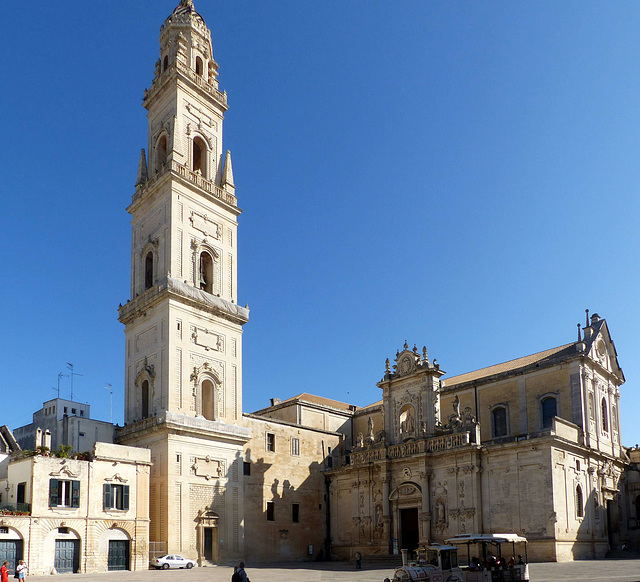Lecce - San Niccolò dei Greci
Brindisi - Castello alfonsino
Monopoli - Concattedrale della Madonna della Madia
Bari - Cattedrale di San Sabino
Bari - Cattedrale di San Sabino
Bari - Cattedrale di San Sabino
Bari - La Bottega del Detersivo
Bari - Castello Normanno-Svevo
Bari - Marnarid Dolciumi
Bari - Palazzo delle Finance
Bari - Teatro Petruzzelli
Canosa di Puglia - Mausoloei di Boemondi
Canosa di Puglia - Mausoloei di Boemondi
Canosa di Puglia - Basilica di San Sabino
Canosa di Puglia - Basilica di San Sabino
Canosa di Puglia - Basilica di San Sabino
Canosa di Puglia - Basilica di San Sabino
Orsara di Puglia - Abbazia St. Angelo / Grotta St.…
Orsara di Puglia - Grashopper
Troia - Concattedrale di Troia
Troia - Concattedrale di Troia
Troia - Concattedrale di Troia
Troia - Concattedrale di Troia
Otranto
Taranto - Cattedrale di San Cataldo
Matera - Sasso Caveoso
Matera - Convento di Sant'Agostino
Reggio Calabria - Duomo di Reggio
Location
See also...
Keywords
Authorizations, license
-
Visible by: Everyone -
All rights reserved
-
55 visits
Lecce - Duomo di Lecce


A legend tells, that a city called Sybar existed at the time of the Trojan War. It was conquered by the Romans in the 3rd century BC, receiving the new name of Lupiae.
After the fall of the Western Roman Empire, Lecce was sacked by the Ostrogoth troops of king Totila. In 549 it was taken by Byzantium and remained part of the Eastern Roman Empire for five centuries, interrupted by brief invasions by the Saracens, Longobards, Hungarians and Slavs.
After the Norman conquest in the 11th century, Lecce regained commercial and political importance, flourishing in the subsequent Hohenstaufen and Angevine rule. From the 15th century, Lecce was one of the most important cities of southern Italy, and, starting in 1630, it developed into a centre of Baroque architecture. This was made possible by the soft tuff stone found in the area, perfect for that architecture.
-
The cathedral is located on the southeast corner of the "Piazza del Duomo" in the centre of the city. It first built in 1144, it underwent modifications later and was rebuilt in 1659 by the architect Giuseppe Zimbalo (aka "Zingarello") by order of bishop Luigi Pappacoda, in thy Baroque style typical for Lecce. The architect did not change the general layout but added an enormous, Baroque portal. This portal is considered to be a masterpiece of Baroque art.
The campanile was built between 1661 and 1682. It was built to replace the Romanesque one, which had collapsed at the beginning of the 17th century. At a height of about 70 m the bell tower offers views of the Adriatic Sea and was used as a watchtower in former times.
After the fall of the Western Roman Empire, Lecce was sacked by the Ostrogoth troops of king Totila. In 549 it was taken by Byzantium and remained part of the Eastern Roman Empire for five centuries, interrupted by brief invasions by the Saracens, Longobards, Hungarians and Slavs.
After the Norman conquest in the 11th century, Lecce regained commercial and political importance, flourishing in the subsequent Hohenstaufen and Angevine rule. From the 15th century, Lecce was one of the most important cities of southern Italy, and, starting in 1630, it developed into a centre of Baroque architecture. This was made possible by the soft tuff stone found in the area, perfect for that architecture.
-
The cathedral is located on the southeast corner of the "Piazza del Duomo" in the centre of the city. It first built in 1144, it underwent modifications later and was rebuilt in 1659 by the architect Giuseppe Zimbalo (aka "Zingarello") by order of bishop Luigi Pappacoda, in thy Baroque style typical for Lecce. The architect did not change the general layout but added an enormous, Baroque portal. This portal is considered to be a masterpiece of Baroque art.
The campanile was built between 1661 and 1682. It was built to replace the Romanesque one, which had collapsed at the beginning of the 17th century. At a height of about 70 m the bell tower offers views of the Adriatic Sea and was used as a watchtower in former times.
Ernest CH has particularly liked this photo
- Keyboard shortcuts:
Jump to top
RSS feed- Latest comments - Subscribe to the comment feeds of this photo
- ipernity © 2007-2024
- Help & Contact
|
Club news
|
About ipernity
|
History |
ipernity Club & Prices |
Guide of good conduct
Donate | Group guidelines | Privacy policy | Terms of use | Statutes | In memoria -
Facebook
Twitter

Sign-in to write a comment.